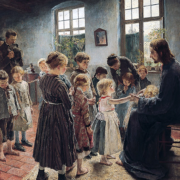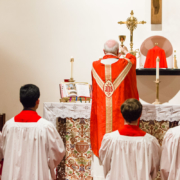Faithful Catholic Colleges March to ‘Defend Innocent Life’
“We journey to Washington D. C. together to defend innocent life, and we find ourselves greatly edified,” says Magdalena Danja, a senior at The Thomas More College of Liberal Arts in Merrimack, N.H., about the College’s pilgrimage to the March for Life, taking place this Friday, January 24.
“It is a beautiful thing to see so many young people from all over the country coming together for the same purpose, and to experience the camaraderie created by a sleepless night on the road, after which we sing and pray our way up Capitol Hill, banners held high, testifying to the joy which springs from fighting for the true and the right,” she continues.
It certainly is a beautiful thing—many faithful Catholic colleges are going to great lengths to witness at this year’s March for Life. Thomas More College will be cancelling classes during the March, and other Catholic colleges recommended in The Newman Guide will be, too.
The Catholic University of America in Washington, D.C., cancelled classes for the first-time last year and is continuing the tradition this year, expecting more than 500 students to attend the March. Christendom College in Front Royal, Va., has cancelled classes during the March every year since its founding more than 40 years ago, so that its entire student body of nearly 500 students can attend.
Magdalen College of the Liberal Arts in Warner, N.H., also cancels classes and offers travel scholarships for students to attend, and the new east coast campus of Thomas Aquinas College in Northfield, Mass., which opened this year, will cancel classes this Friday so that its entire student body can attend.
Some of the groups traveling the furthest distances, more than 1,000 miles, include Ave Maria University in Ave Maria, Fla., Benedictine College in Atchison, Kan., and the University of Mary in Bismarck, N.D. All three of the colleges will be bringing more than 200 students.
Students from Texas will be present as well. For the first time in several years, the University of Dallas in Irving, Tex., is organizing an official group of 44 students to attend the March, and 40 students—their largest group yet—from the University of St. Thomas in Houston, Tex., are flying to Washington, D.C., for the event.
Three new college presidents will be leading groups to the March: Fr. David Pivonka, TOR, of Franciscan University of Steubenville in Steubenville, Ohio, with 500 students; Fr. Peter Kucer, MSA, of Holy Apostles in Cromwell, Conn., with more than 100 seminarians, religious, students and faculty; and President Tim Collins of Walsh University in Canton, Ohio, with 100 students.
Many of the colleges visit historic and spiritually significant sites, such as the Holocaust Museum, Basilica of the National Shrine of the Immaculate Conception and Franciscan Monastery of the Holy Land to make the trip to Washington, D.C., into a pilgrimage.
More than 100 students, faculty and monks from Belmont Abbey College in Belmont, N.C., will be making a pilgrimage to the Saint John Paul II National Shrine before the March. A contingent from Our Lady Seat of Wisdom College in Barry’s Bay, Ontario, will be spending a couple days in D.C. surrounding the March.
The day after the March for Life, colleges on the west coast will take part in the Walk for Life in San Francisco, Calif., including John Paul the Great Catholic University in Escondido, Calif., Thomas Aquinas College in Santa Paula, Calif., and Wyoming Catholic College in Lander, Wyo.

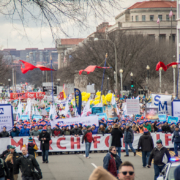
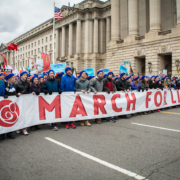

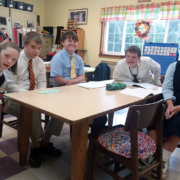

 Anthony Melone on Unsplash.com
Anthony Melone on Unsplash.com

